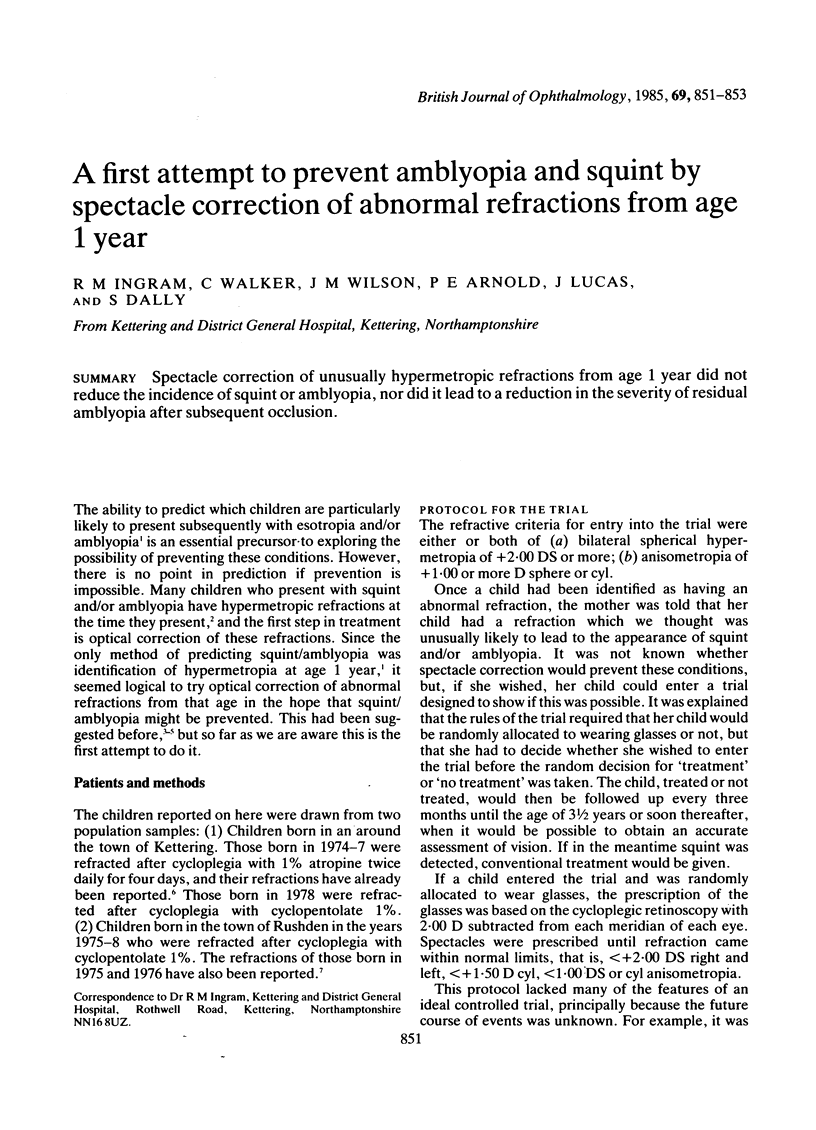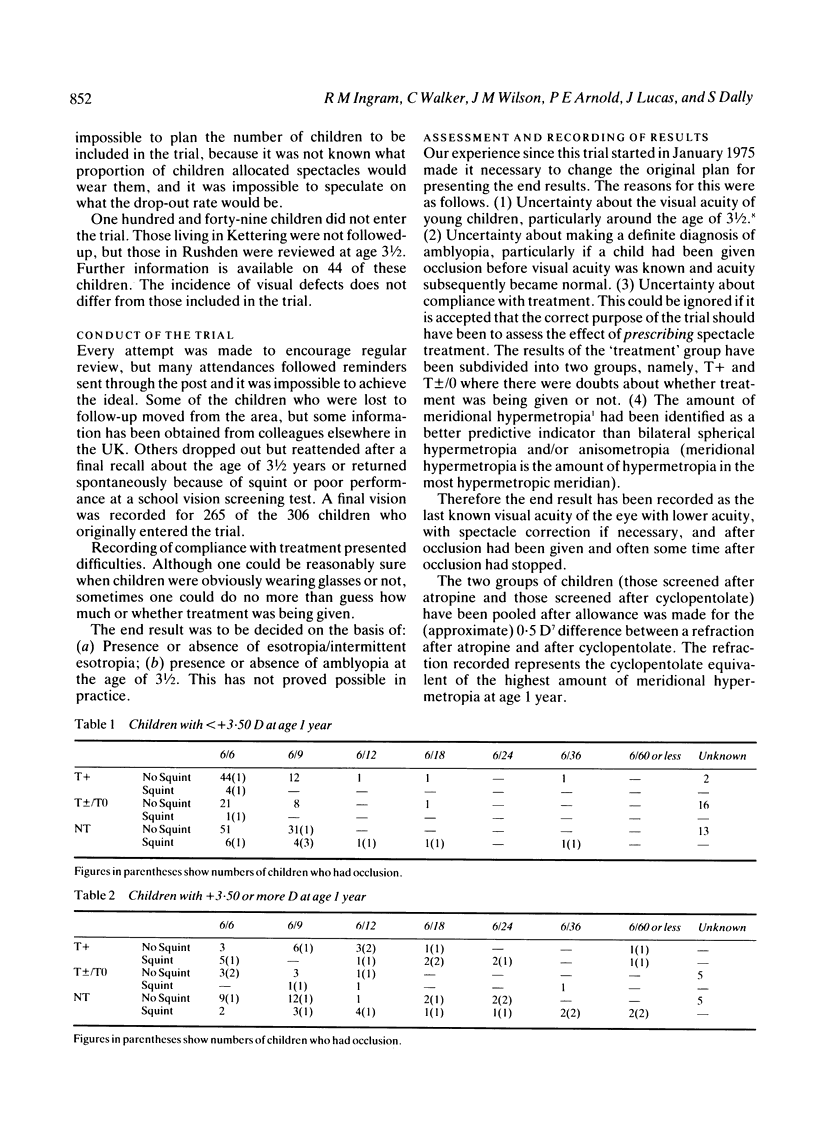Abstract
Spectacle correction of unusually hypermetropic refractions from age 1 year did not reduce the incidence of squint or amblyopia, nor did it lead to a reduction in the severity of residual amblyopia after subsequent occlusion.
Full text
PDF


Selected References
These references are in PubMed. This may not be the complete list of references from this article.
- Ingram R. M., Barr A. Refraction of 1-year-old children after cycloplegia with 1% cyclopentolate: comparison with findings after atropinisation. Br J Ophthalmol. 1979 May;63(5):348–352. doi: 10.1136/bjo.63.5.348. [DOI] [PMC free article] [PubMed] [Google Scholar]
- Ingram R. M. Refraction as a basis for screening children for squint and amblyopia. Br J Ophthalmol. 1977 Jan;61(1):8–15. doi: 10.1136/bjo.61.1.8. [DOI] [PMC free article] [PubMed] [Google Scholar]
- Ingram R. M. Refraction of 1-year-old children after atropine cycloplegia. Br J Ophthalmol. 1979 May;63(5):343–347. doi: 10.1136/bjo.63.5.343. [DOI] [PMC free article] [PubMed] [Google Scholar]
- Ingram R. M., Traynar M. J., Walker C., Wilson J. M. Screening for refractive errors at age 1 year: a pilot study. Br J Ophthalmol. 1979 Apr;63(4):243–250. doi: 10.1136/bjo.63.4.243. [DOI] [PMC free article] [PubMed] [Google Scholar]


